Step into History – The Khamsah of Nizami Medieval Persian Hamam Painting ancient Herati school
About the Painting:
- Subject: The Khamsah of Nizami Medieval Persian Hamam Painting ancient Herati school – a historical manuscript.
- Art Medium: Handmade Indian Miniature Painting using watercolors on aged paper.(Vintage Manuscripted)
- Size: 22 x 16 cm
- Artistic Technique: Meticulously crafted by skilled Indian artists, reflecting the legacy of traditional artistry and generational expertise.
Features:
- Historical Richness: Captures a scene from the illustrious Persian Royal King , presenting an authentic glimpse into Persia history.
- Artistic Detail: Intricate portrayal of courtiers, architecture, and attire, showcasing the opulence and grandeur of the King era.
- Cultural Significance: Brings to life a segment of the King , offering a window into the cultural and historical heritage of Persia.
- Masterful Watercolor Work: Rich and vibrant colors enhance the depth and beauty of this masterpiece, adding allure to any space.
Why Choose This Painting?
- Rare Depiction: Unique representation sourced from the Hammam, making it a distinctive addition to any art collection.
- Historical Interest: Ideal for history enthusiasts, collectors, or individuals fascinated by Persian history and its artistic representations.
- Artisanal Excellence: Support the craftsmanship of Indian artists who preserve and showcase their skills through such exquisite works of art.
Step back in time to The Khamsah of Nizami Medieval Persian Hamam Painting ancient Herati school with this remarkable Indian Miniature Painting. Own a piece of history and immerse yourself in the opulence and cultural significance of the Persian era, beautifully captured by skilled Indian artisans.
Story and History –
Illustrating a parable in Makhzan al-Asrar (‘Treasury of Secrets’), the first of the five books of the Khamsah, ‘Harun al-Rashid and the barber’ takes us inside a hammam (‘bathhouse’). We are well and truly inside since the plain doorway in the right marks the entry to an area of privacy, or relative privacy. In its main saloon, men, with their gaze politely directed away from each other, are dressing or undressing with proper decorum. To the left is a more private space, its status is expressed in a more stately architecture: this is for the moment reserved for caliphal use. In it Harun al-Rashid is the direct object of attention of two attendants, and appears to have engrossed the activity of two more. This space is the focus of the narrative: the viewer’s eye has been led towards it from right to left, according to the reading direction of the Persian script. The text tells us that when Harun visits the hammam the barber who shaves his head asks for the hand of his daughter in marriage. Harun is incensed by this impertinence, which is, moreover, repeated on his subsequent visits. Harun puts this problem to his vizier, remarking that it seems unwise to subject oneself to the double threat of an actual razor and a dagger-like word. The vizier speculates that the barber’s presumption might result from his standing over a treasure: the caliph should order him to move his position. Harun acts accordingly; standing on a different spot, the barber no longer feels himself the caliph’s equal; excavation reveals the treasure over which had been beneath his feet.
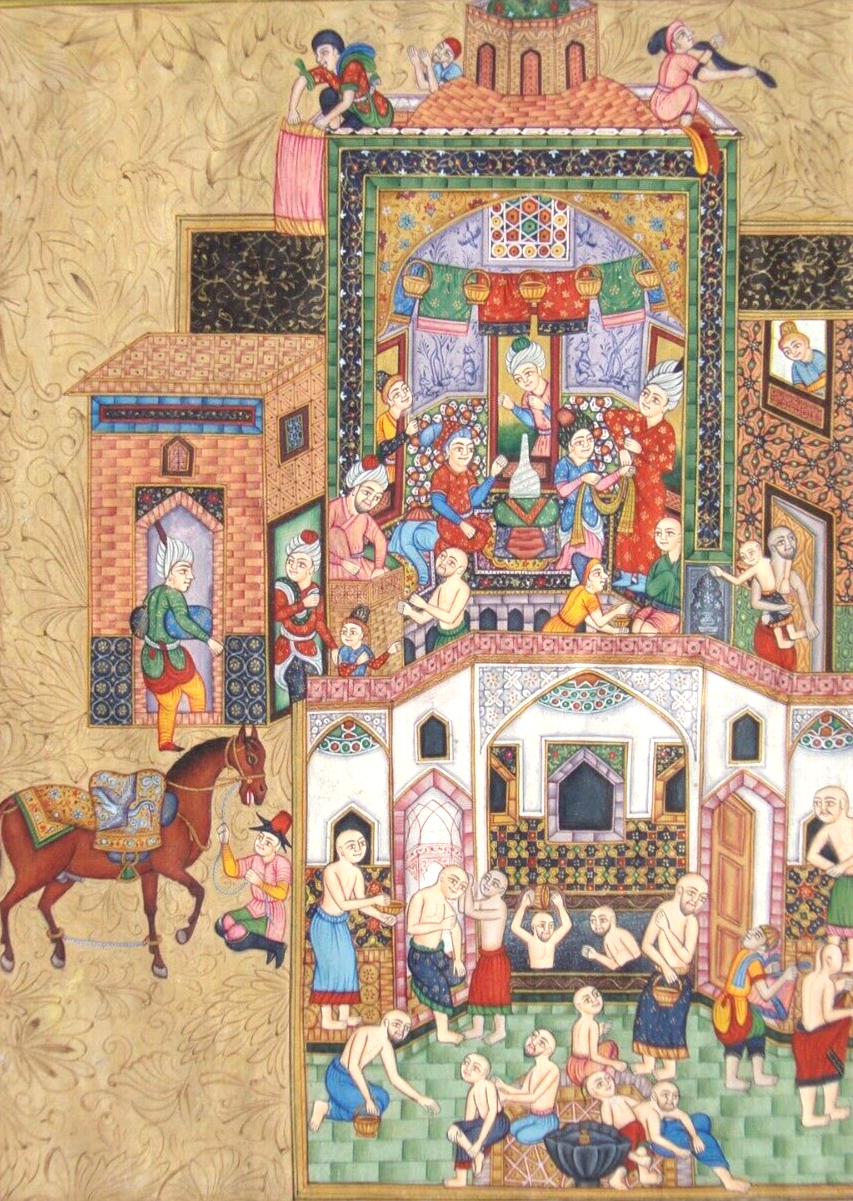
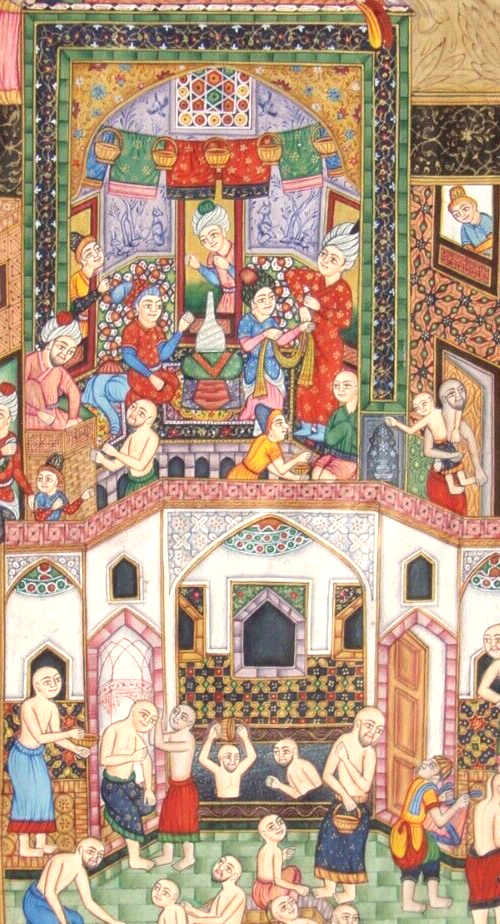
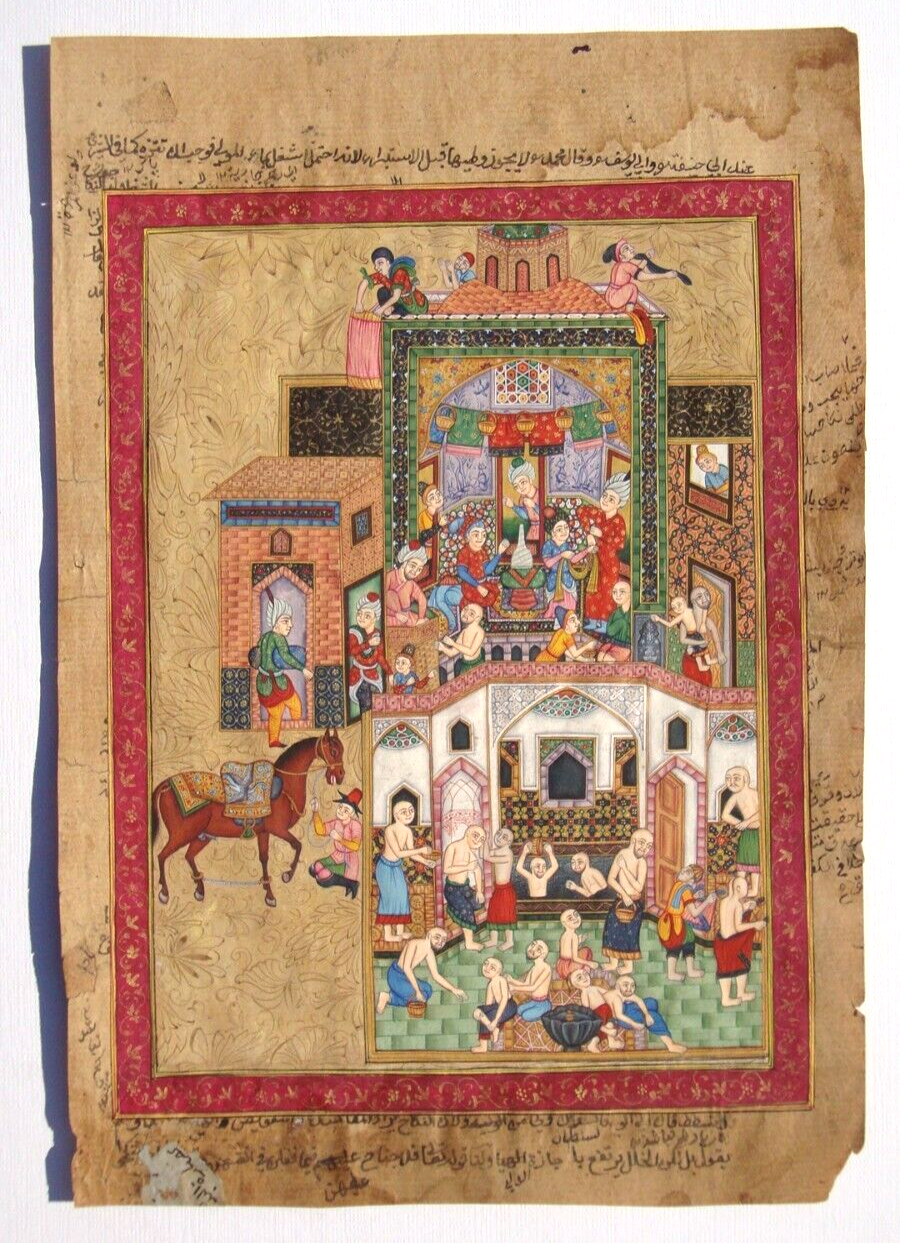

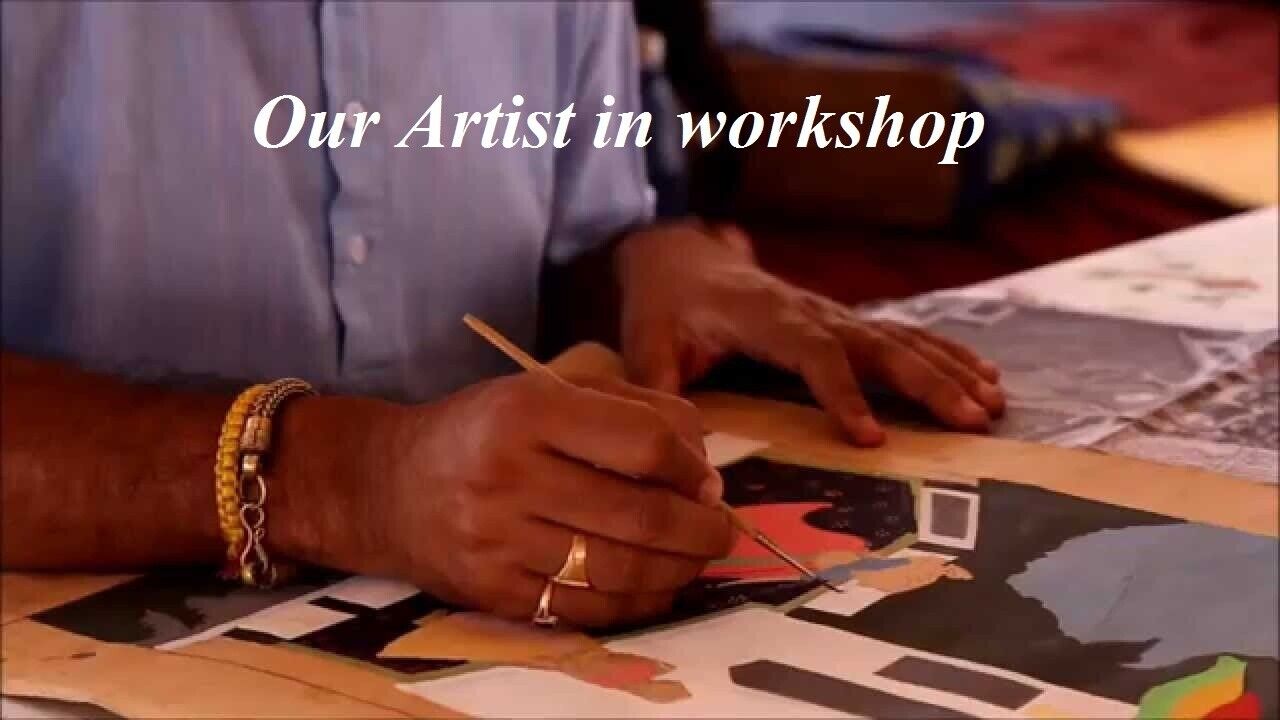


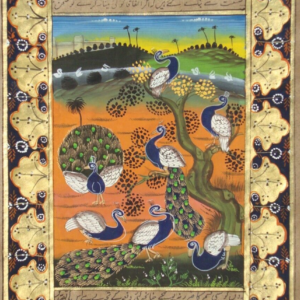

Reviews
There are no reviews yet.